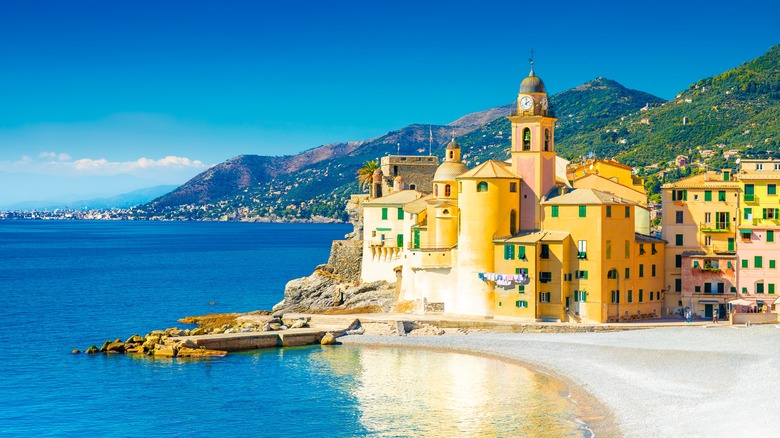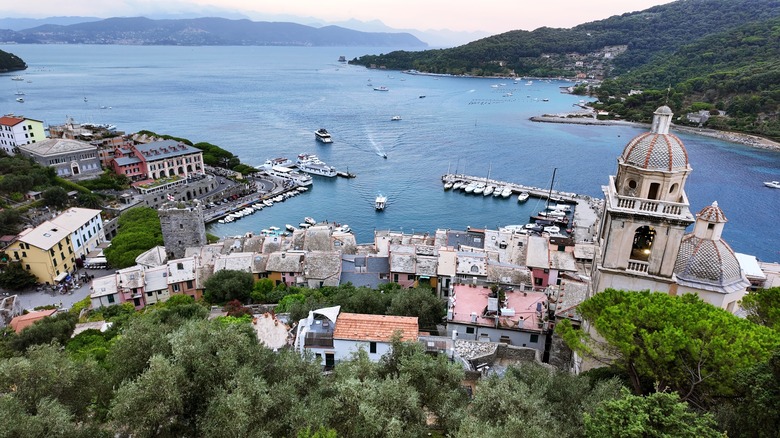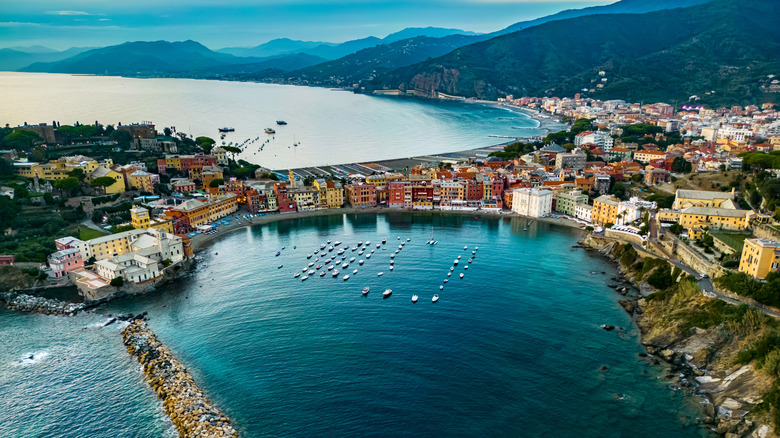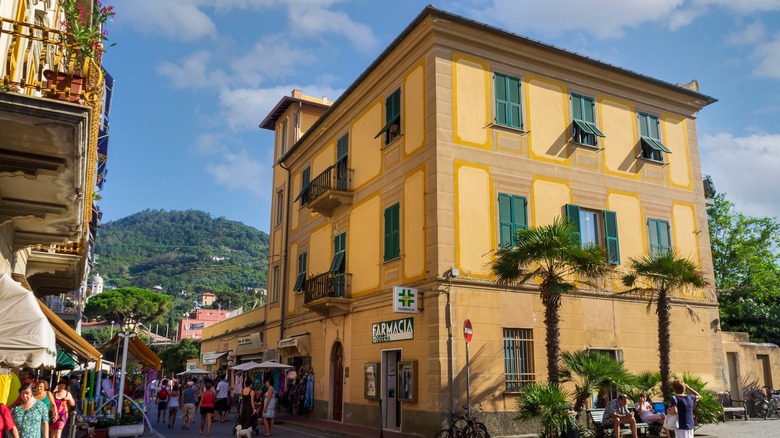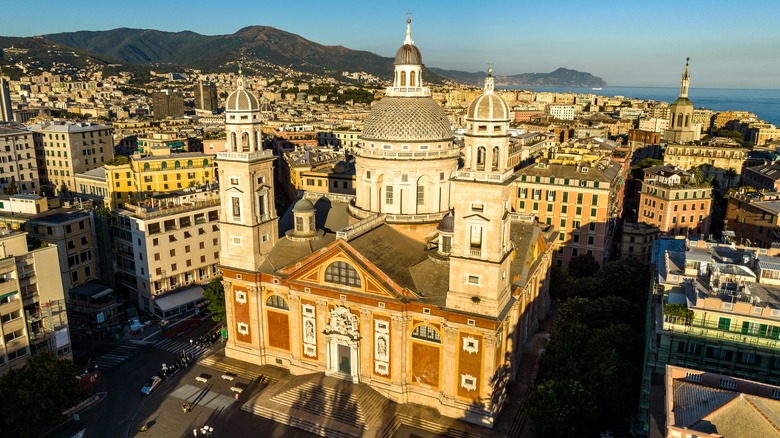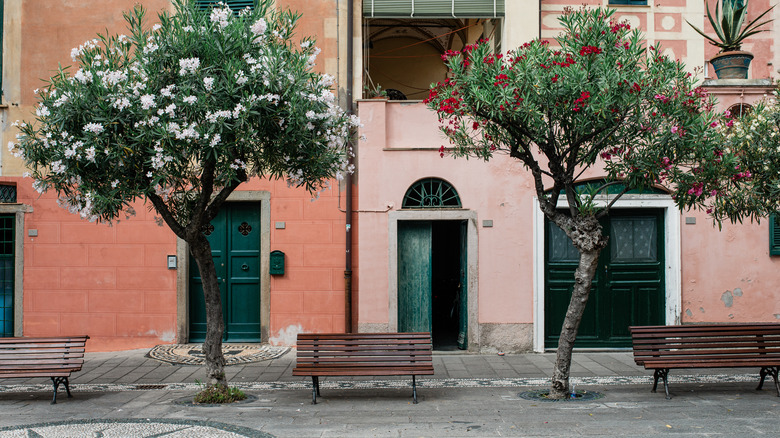Italy's Liguria Region Is More Than Just The Cinque Terre. Escape Crowds At These 5 Towns
If you make your way past the hidden gems of the French Riviera and proceed along the Mediterranean coast, you are greeted by the equally spectacular Italian Riviera — the region officially known as Liguria. The crescent seaboard in the country's northwest features a coastline of dramatic cliffs, ancient architecture, and some of the world's most idyllic beaches. It also folds in many Italian essentials like incredible food and wine that every visitor to the country yearns for. Liguria's highlight is the Cinque Terre, which is a row of five ancient fishing villages perched atop coastal cliffs. Unfortunately, its rich offerings have also resulted in Cinque Terre becoming one of Italy's tourist traps to avoid.
This doesn't mean that you have to stay away from Liguria as a whole; quite the opposite. There are several towns that let you experience the region's stunning beauty without having to navigate crushing crowds and outrageous tourist prices. Because the nearby Cinque Terre villages are such crowd-pullers, these surrounding towns are often skipped from travel itineraries. They're also not all sleepy little towns, and though glittering Portofino is not on our list because of its popularity amongst visitors to Italy, the high-end village deserves special mention as a luxurious reprieve from the region's rustic charm, making it well worth a day trip. Start exploring the Italian Riviera's craggy seaside terrain and you'll be rewarded with some of Italy's finest getaways.
Portovenere
Portovenere is a UNESCO heritage site, much like the Cinque Terre and its adjacent islands. Known lovingly as the "sixth land" to the five fishing villages, this coastal town is not as touristy while still having the charm of an ancient fishing village. This doesn't mean it is uncrowded, and you will find tourists in Portovenere, especially during the summer rush. However, it often goes under the radar and caters to day trippers, which means that by the evening the town becomes peaceful and idyllic. While some may consider using it as a base to explore the region, keep in mind that Portovenere doesn't have a train station (which is also what helps keep the crowds at bay). Therefore, it's best to spend a night or two here exploring the town and soaking in all that it has to offer.
There's quite a bit to see in Portovenere and, as a result of its history as a busy harbor, it is dotted with some gorgeous examples of vintage architecture. The Gothic San Pietro church is situated on a cliff overlooking the sea while the imposing Doria Castle forms the backdrop for much of the small town. And while you can't catch a train from there, you can hike or cycle through an endless network of trails that surround Portovenere and explore the region at a leisurely pace.
Sestri Levante
A truly underrated destination, Sestri Levante gets overshadowed by nearby destinations like Portofino and the Cinque Terre. Originally an island, the town is now connected to the mainland by a narrow strip of land, which gives it the unique feature of having bays on both sides. On one side is Baia delle Favole, which translates to Fairytale Bay. The name is inspired by the Danish writer Hans Christian Anderson, whose body of work includes The Little Mermaid, and who was seemingly enchanted by the region during his time there. The town even has a vibrant annual festival commemorating the writer during which the public areas are filled with colorful street artists and stands.
On the other side of town is the pristine Baia del Silenzio or Bay of Silence, which encloses one of the region's most beautiful beaches. It is frequented more by locals than tourists, which is often a promising sign if you're trying to escape crowds. Nearby are the town's historic center and the Chiesa di San Nicolò (St. Nicolas Church) and an easy walk through the town's old quarter rewards you with views of old architecture with pristine bays in the backdrop.
Levanto
Situated just north of the northernmost Cinque Terre village, Levanto is the perfect base to explore the popular fishing villages. However, it is also an intriguing destination in its own right, balancing rustic charm and luxury. While not as large as La Spezia, the city that bookends the Cinque Terre to the south, Levanto was historically wealthier than the fishing villages and is therefore more spread out and ornate. You can even drive here, which is generally discouraged in the nearby villages because of its narrow winding roads and tourist crowds. Levanto also has a train station and is only a few minutes train ride from Monterosso, the closest Cinque Terre village.
The beach is another haven for local tourists, who you will see during the summer. During other months, Levanto is relatively calm. However, between the local markets, cafes, and historic sights like the 13th-century Church of Sant Andrea and Clocktower, there's enough to keep you occupied. This is also a wonderful town to cycle around in and you can do so on picturesque coastal paths or head to one of the many trails that lead into the surrounding countryside and towns. Just remember that if you plan on cycling to Cinque Terre, some parts of the fishing villages feature steep steps and are, therefore, not ideal for cycling.
Genoa
Genoa is by far the largest seaside town on this list, but its size actually works in the favor of anyone looking to get away from tourist throngs because the city barely feels crowded despite its multiple claims to fame. Popular for being the birthplace of the iconic green basil pesto, Genoa is the capital of the Liguria region and has been an important seaport for over a millennium. The ancient city is the birthplace of Christopher Columbus and is rife with iconic monuments from the medieval, Renaissance, Gothic, and intermediate eras. In fact, Genoa has the largest historic center in Europe, and some of its old streets and noble palaces are UNESCO heritage sites. Across multiple museums, the city contains several important pieces of art and even an impressive aquarium.
Despite having all the hallmarks of a bustling city, Genoa feels calm and is very walkable. Most touristy places, including the museums, are generally uncrowded and because of the city's size, you will always be able to find budget options for food and accommodation. For the calmest surroundings, walk through Genoa's picturesque residential neighborhoods and sample some of the best food in Italy including the local pesto and focaccia bread.
Bonassola
One of the quaintest towns in Liguria, Bonassola is so small you might just miss it if you don't look out for it. Situated close to Levanto, you can access it by road, train, or a picturesque bike trail. Unlike some of the historically wealthy towns in this list, Bonassola depended on agriculture and fishing, which is reflected in the town's rustic charm. Despite its long history which goes back to medieval times, this Ligurian village is delightfully small and you'll have no problem covering it on foot. The old city center is essentially one main street that culminates in the town's most famous church. The other prominent structure is the 16th-century castle that was originally built to protect Bonassola against pirates and now hosts art exhibitions and events.
A visit to Bonassola could arguably make you feel most like a local as you would spend your day walking around the relatively compact village, or sitting by the street with a coffee or fresh gelato and watching the quaint surroundings. There are several family-run hotels and eateries in Bonassola, so expect to have long and languid Italian meals when you visit this town.
